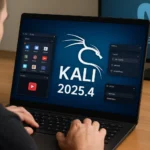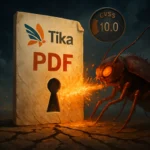Cybersecurity researchers have identified a massive attack campaign orchestrated by Chinese threat actors exploiting a critical zero-day vulnerability chain in Microsoft SharePoint. The sophisticated operation has successfully compromised over 400 servers across 148 organizations worldwide, including sensitive U.S. government infrastructure, highlighting the urgent need for immediate security updates and enhanced monitoring protocols.
ToolShell Vulnerability Chain: From Research to Weaponization
The vulnerability chain, designated as ToolShell, was initially demonstrated by Viettel Cyber Security researchers during the Pwn2Own Berlin competition in May 2025. The research team successfully chained two critical flaws—CVE-2025-49706 and CVE-2025-49704—to achieve remote code execution (RCE) capabilities against SharePoint servers.
Following Microsoft’s security patches released in July 2025, threat actors rapidly developed bypass techniques, leading to the discovery of two additional vulnerabilities. The most severe, CVE-2025-53770, carries a critical CVSS score of 9.8, while CVE-2025-53771 received a moderate rating of 6.3. This rapid evolution demonstrates the sophistication and resources available to state-sponsored threat groups.
Attack Campaign Scale and Impact Assessment
Leading cybersecurity firms, including Cisco Talos, Check Point, CrowdStrike, Palo Alto Networks, and SentinelOne, have confirmed active exploitation of these vulnerabilities since July 7, 2025. The campaign primarily targets government agencies, telecommunications providers, and IT organizations across North America and Western Europe.
The most significant breach involved the National Nuclear Security Administration (NNSA), the U.S. agency responsible for maintaining the nation’s nuclear stockpile. Department of Energy officials confirmed the July 18 incident but emphasized minimal impact due to the agency’s use of Microsoft M365 cloud infrastructure and rapid containment measures.
Attribution: Chinese APT Groups Behind ToolShell Attacks
Microsoft Threat Intelligence and Mandiant Consulting have attributed the campaign to three distinct Chinese Advanced Persistent Threat (APT) groups, each bringing unique capabilities and targeting preferences:
Linen Typhoon (APT27, Bronze Union, Emissary Panda) represents one of China’s most prolific espionage groups, specializing in long-term intelligence gathering operations against high-value targets.
Violet Typhoon (APT31, Bronze Vinewood, Judgement Panda) operates with suspected ties to Chinese intelligence services, focusing primarily on government and defense sector targets.
Storm-2603, while less publicly documented, has demonstrated significant technical capabilities by rapidly integrating ToolShell exploits into their operational toolkit.
Technical Mitigation Strategies and Security Recommendations
Microsoft has released emergency patches for all affected SharePoint versions, including SharePoint Subscription Edition, SharePoint 2019, and SharePoint 2016. Security teams must implement comprehensive remediation strategies beyond simple patching.
Critical security measures include immediate security key rotation and enabling Antimalware Scan Interface (AMSI) integration with Microsoft Defender Antivirus in Full Mode for on-premises SharePoint deployments. Organizations should also conduct thorough security audits to identify potential compromise indicators.
Future Threat Landscape and Risk Assessment
The security situation has deteriorated with the publication of a proof-of-concept exploit for CVE-2025-53770 on GitHub. This development significantly lowers the technical barrier for exploitation, potentially enabling less sophisticated threat actors to conduct ToolShell-based attacks.
The ToolShell incident underscores the critical importance of proactive security management in enterprise environments. Organizations must prioritize immediate patch deployment, conduct comprehensive SharePoint server security assessments, and implement enhanced network monitoring to detect compromise indicators. The rapid weaponization of research findings demonstrates that modern cybersecurity requires both technical vigilance and strategic threat intelligence integration to protect against evolving state-sponsored threats.






